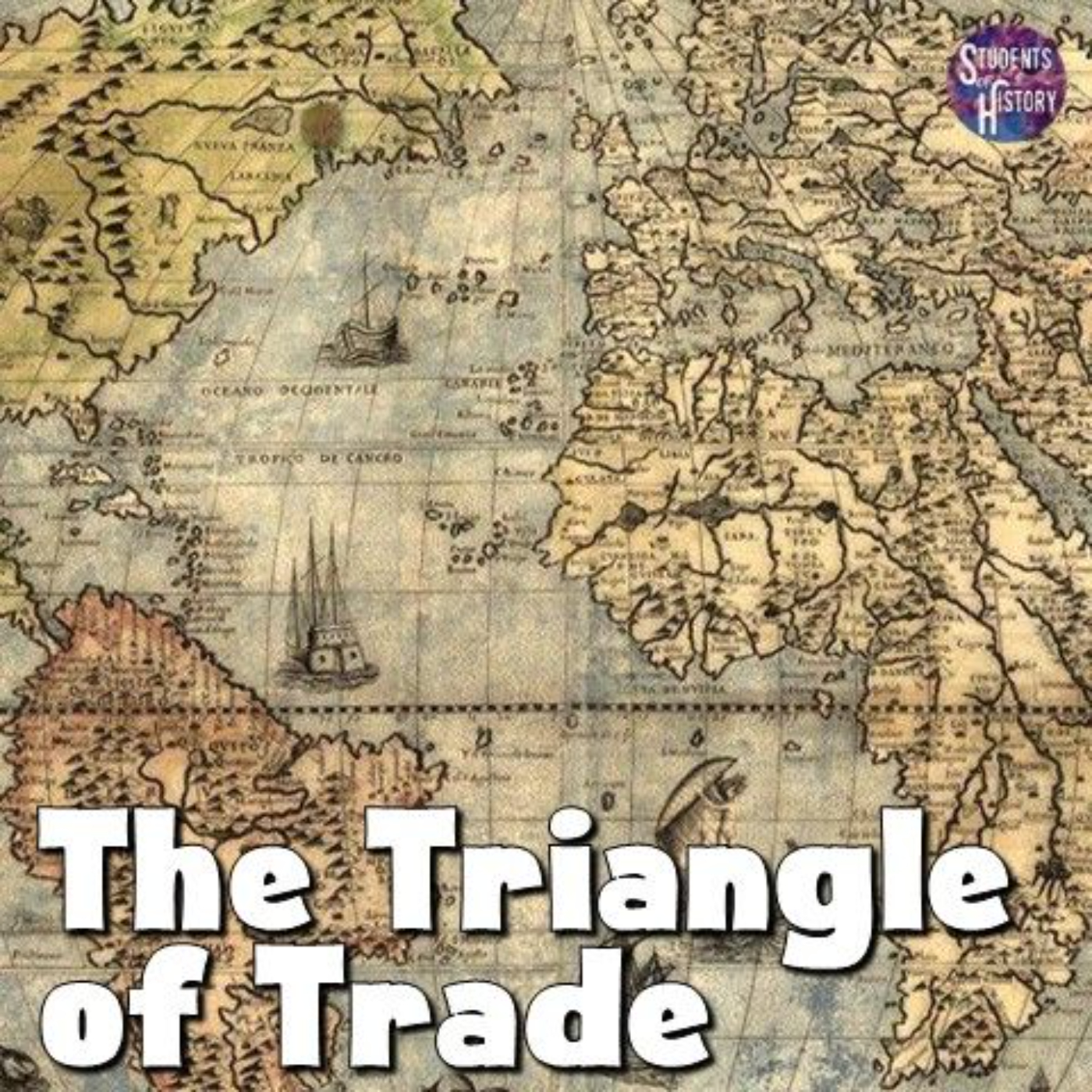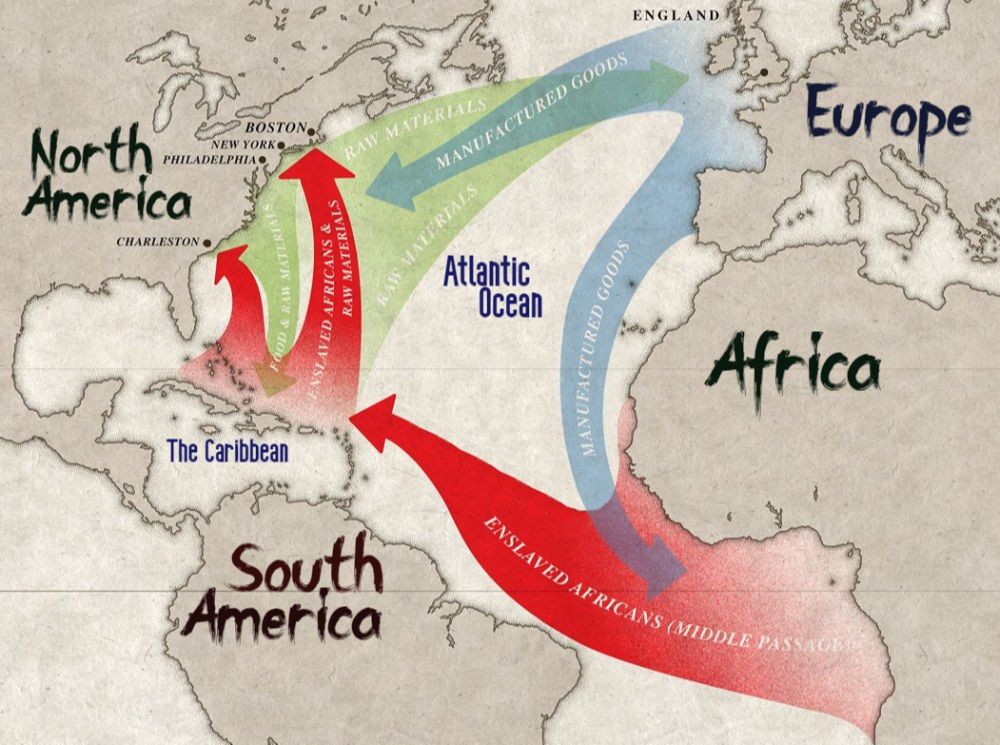The Triangle of Trade

As Europeans conquered and formed colonies in the Caribbean and North America, they became reliant upon captured and enslaved Africans to work their sugar, cotton, and tobacco plantations. Indigenous Americans were enslaved also, but were dying by the millions from smallpox and other diseases brought by Europeans. Enslaved Africans, brought to the Americas along the brutal middle passage, were forced to be the new labor force.
This created a trade network across the continents that became known as the Triangle of Trade. It connected Europe, Africa, and the Americas and saw goods, people, and cultural elements move between the three regions from the 1500s into the 19th century.

Portuguese, Spanish, Dutch, French, and British ships would arrive in West African ports with manufactured goods for sale. These included guns, ammunition, rum, textiles, and other goods. This cargo would then be sold or traded for enslaved people. African kingdoms and merchants would capture men, women, and children from rival tribes and offer them up for sale.
These enslaved people then forced to endure a brutal two to three month journey to the Americas on what is now known as the Middle Passage. Many died of disease in the crowded holds of the slave ships. Others rebelled and were killed or thrown overboard.
Once the ship reached the New World, enslaved survivors were sold in the Caribbean or the American colonies. The ships were then cleaned, and loaded with export goods for a return voyage to Europe.
These export goods included sugar, molasses, tobacco, cotton, furs, and other raw materials. The ship then returned to Europe to complete the triangle and the cycle continued.
Each continent was undeniably impacted by this triangular trade network. Millions of Africans were captured and sent across the world. To defend themselves against enslavers, African kingdoms purchased European firearms, which they could only pay for with other enslaved people. This sparked wars and fighting across West Africa.
In America, the impact of this trade relationship was paid by the Native Americans, as diseases spread throughout their tribes. The influx of foreign people brought bacteria and germs that the Native Americans’ bodies could not fight off.
A plantation economy developed in America as a result of the institution of slavery. Mass production of cash crops became the basis for the entire economy in America's southern colonies.
A strict social hierarchy also went into effect, especially in Latin America. The encomienda system developed in Spanish colonies in which indigenous people were forced to work and pay tribute to the conquering Europeans. This pitted races and groups against one another and created a social hierarchy that lasted centuries.
The Triangle of Trade's impact on Europe was an influx of wealth and new resources. Europeans also saw a diffusion of their culture and people across the globe.